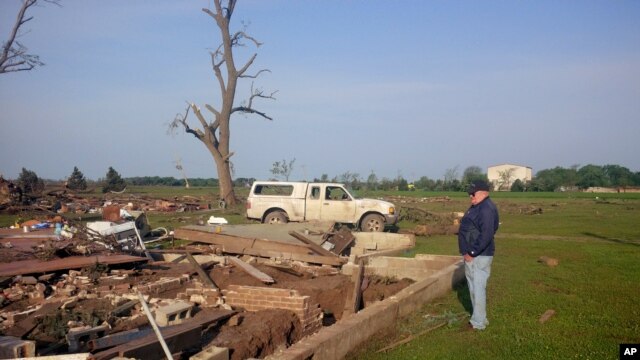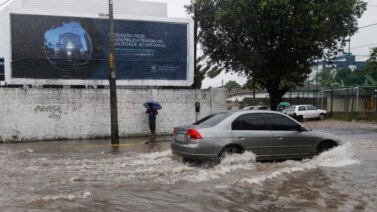
Natural disasters happen everywhere in the world. Many cause property damage and loss of life. But researchers say the severity of their effects can be reduced if people take steps to prepare.
A new exhibit teaches what governments and individuals can do to lessen the effects. The show is taking place at the National Building Museum here in Washington, D.C.
Natural disasters take place often, and sometimes unexpectedly, across the United States. But there is technology that can save property and lives.
Chrysanthe Broikos organized the exhibit at the National Building Museum. She says large buildings and other structures can survive strong earthquakes if they are built with some level of flexibility. In other words, they need to be able to bend and move as the earth shakes.
“We need to let buildings move and we can actually understand where they might fail, and then go in and design buildings with that in mind.”
One building design is called a “special moment frame.” It enables movement at points where large load-bearing supports join each other. Rubber-based foundation blocks let buildings move, while huge shock absorbers help to limit the shaking.
The museum exhibit has a model of a wind wall built at the International Hurricane Research Center in Florida. The model shows how some roofs or tops of buildings are more likely to be destroyed than others because of the strong winds of hurricanes and tornadoes. Chrysanthe Broikos says tests show that a moderately-angled roof is best able to withstand wind storms.

“This hipped roof shape actually withstands better than, actually both, a flat roof or a gable roof.”
In areas with powerful winds, researchers have strongly urged the creation of at least one ‘safe room.’ This is a place where building occupants can spend the most dangerous part of the storm.
Another concern is how to deal with storm surges and flooding. Some coastal communities in the U.S. have made artificial reefs from oyster shells instead of rocks. The builders use shells collected from restaurants to create the barriers.
“It turns out that oyster reefs actually help to attenuate wave action. They also help with soil erosion.”
Chrysanthe Broikos also suggests setting aside land along the coast for parks instead of housing. She says this is more natural and keeps valuable property away from danger.
As for forest fires, researchers now suggest clearing an area about 60 meters wide around a single-family house.
“What that means is trying to keep that area free of material that easily combusts.”
Some natural disasters cannot be prevented. But researchers say planning and timely investment can provide the same kind of protection as putting sunblock on your skin before spending the day outside the house.
I’m Caty Weaver.





